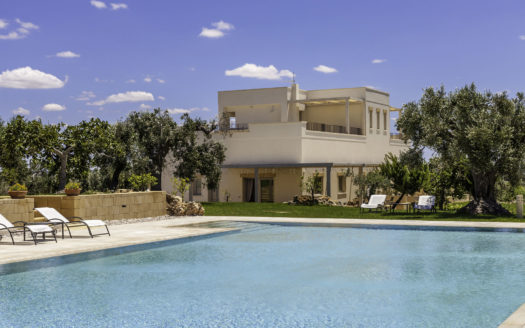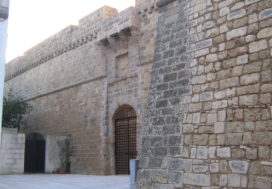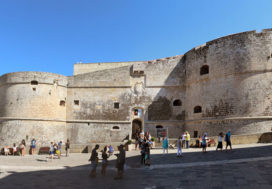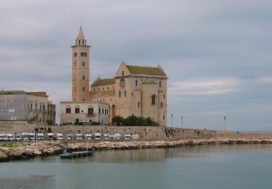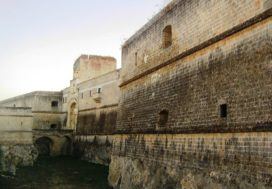During your stay in Tenuta Monticelli or in the Palazzo Castriota, situated in Gallipoli, in Lecce district, in Salento, in Apulia you can discover the lovely villages in Salento.
GALLIPOLI
The beautiful town of Gallipoli, also known as the Pearl of the Ionian, offers many points of interest.
The Angioino Castle dates back to the thirteenth century and extends out over the sea to defend the town. The monumental cylindrical towers were added in the Angevin period. On some towers we can still see the catapults and cannons that were used during the attacks.
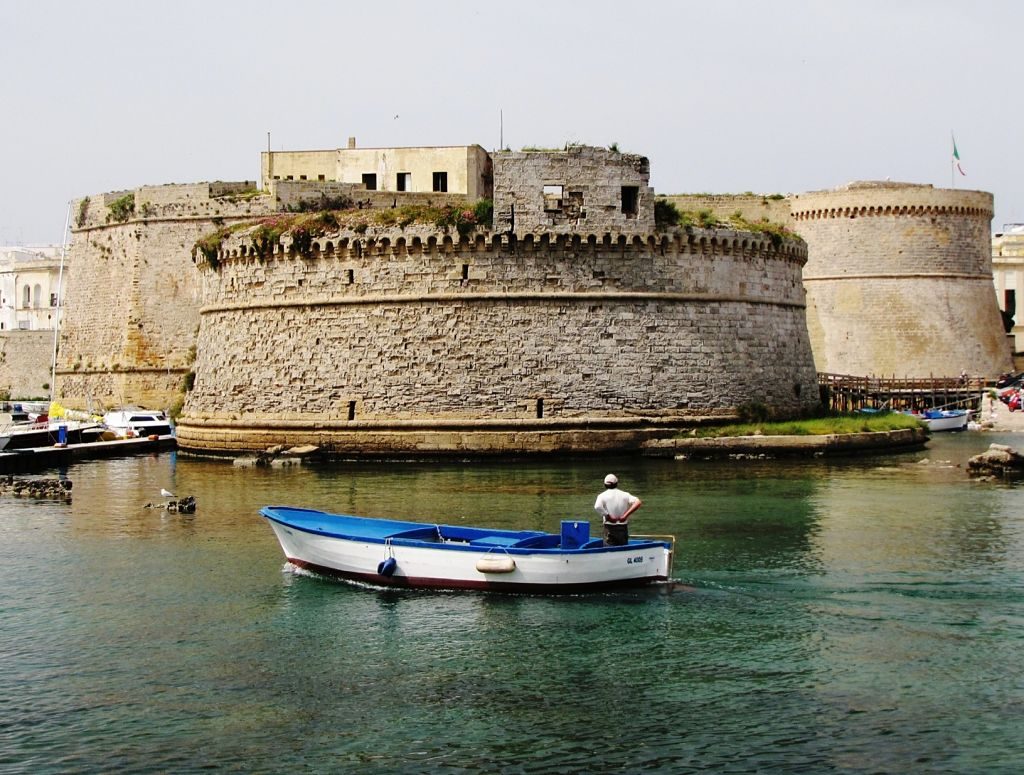
Angioino Castle Gallipoli
Saint Agatha’s Cathedral was built in the seventeenth century in baroque style. Inside, the beautiful high altar is made of polychrome marble, and there are numerous paintings and works of art of great value. One of the niches in the aisles houses the stone statue of Saint Agatha.
The church of San Francesco di Paola was built in the seventeenth century. It has a simple façade which is home to the statue of the saint in a niche located above the portal. Inside, the church consists of a single nave and houses beautiful paintings, the finest ones depicting the Miracles of San Francesco di Paola.
The church of Saint Mary of Purity was built in the mid-seventeenth century. Inside there are numerous paintings of great value and rich putty decorations. The Madonna of Purity is depicted in a beautiful painting placed above the main altar.
CASARANO
In the village of Casarano there is the Church of Santa Maria della Croce. This early Christian church is very old, its structure is simple, gabled with a central rose window. Inside, it houses beautiful mosaics dating back to the fifth century as well as numerous Byzantine frescoes. On the Vault we can see the representation of the heavenly Paradise and the earthly Paradise.
GALATINA
In the old town center of Galatina there’s the Basilica of Saint Catherine of Alexandria, built in Gothic Roman style. The interior of the church is completely painted with representations of the Apocalypse, Genesis, the seven sacraments, the angelic hierarchies and many other themes made at the beginning of the fifteenth century. The convent next to the church also has many frescoes dating back to the late seventeenth century.
NARDO’
Piazza Salandra is the center of Nardò, originally called “Piazza delle Legne” and then “Municipal Square”. This beautiful square is surrounded by beautiful buildings and monuments, and among the most important we find the Sedile, the University Palace, the Fontana del Toro and the Church of San Domenico.
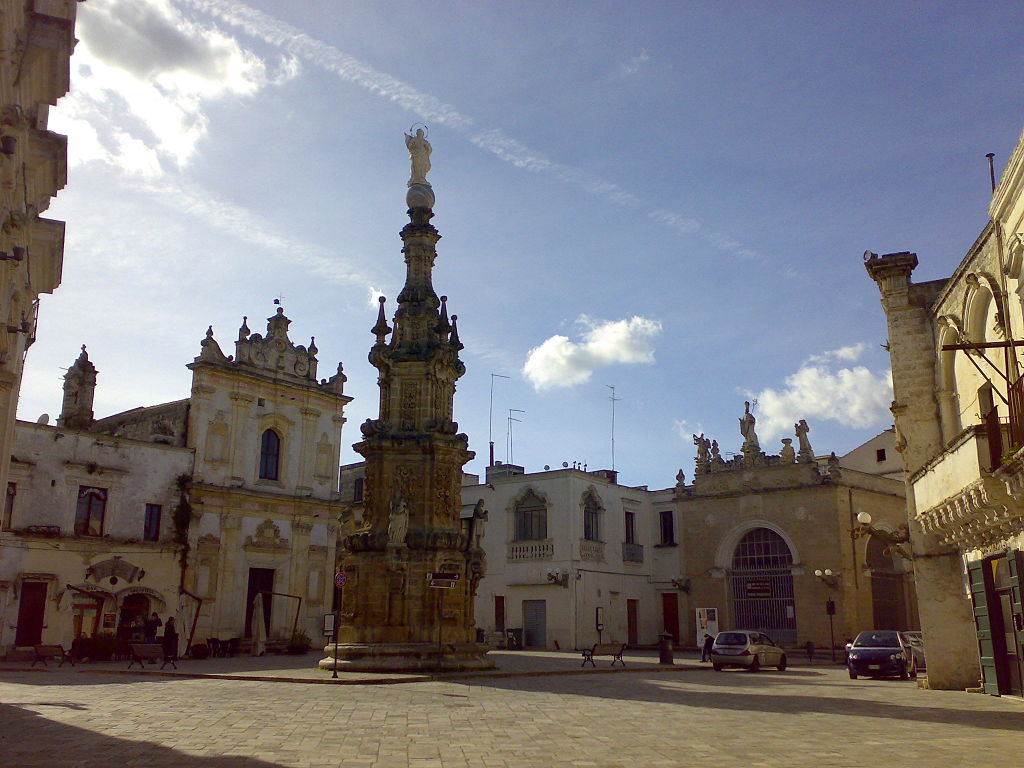
Piazza Salandra Nardò
Acquaviva castle brings the name of the duke who had it built in the fifteenth century. During the XIX century it became a civil residence. The towers are very well-preserved, with the cornices and ornate facade. The castle is now the Municipal seat.
SANTA MARIA DI LEUCA
In Santa Maria di Leuca there’s the Basilica of Santa Maria de Finibus Terrae. This church has a unique outer structure built for defensive purposes in the mid-eighteenth century, to resist to the attacks of the invaders. At the inside there is the Altar to Minerva, an altar of ancient origin, witnessing the pagan customs of the place.
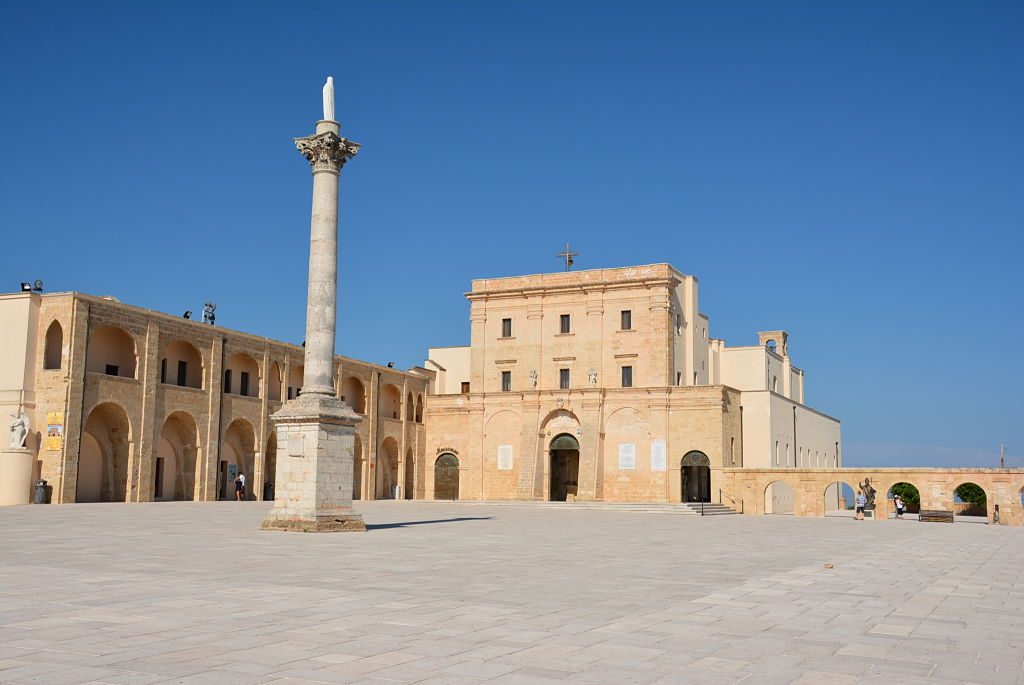
Basilica of Santa Maria de Finibus Terrae
In the area there are numerous nineteenth-century villas with beautiful parks and gardens, including Villa Daniele, Villa Mellacqua, Villa Gioacchino Fuortes.
SPECCHIA
In the village of Specchia we can find several interesting points, such as the Church of the Assumption, the Church of the Presentation of the Blessed Virgin Mary and Risolo Castle built in the sixteenth century.
PRESICCE
Presicce is a also called “town of the underground”, because of the presence of numerous underground mills. Among its attractions there are the Cathedral Church of Saint Andrew the Apostle, the Ducal Palace, St. Andrew’s Column.



